 A small patch of tea bushes growing almost wild (but in fact carefully tended)
A small patch of tea bushes growing almost wild (but in fact carefully tended)
Nothing
is more challenging than to make tea by hand. Much of the finest tea is made by
devoted lay persons and Buddhist monks, who regard the task as a spiritual
discipline requiring great concentration. Certainly, no one can expect to earn
money or fame by tea-making; it can only be done as a labor of love, as a
service to those who practice the Way of Tea. Some people begin each day’s
tea-making with prayers, meditation and reading of scriptures. Ideally,
perhaps, the person making the tea should also pick the leaves but this is not
usually possible. The leaves must come from bushes that are located well away
from any road, for tea readily absorbs the smell of exhaust fumes. Likewise, those
making tea must not use any perfumed soap or cosmetics for the same reason.
Externally and inwardly, there must be real cleanliness, simplicity of mind,
and devotion of heart.

The
leaves, too, have to be carefully selected, especially when making the finest
tea by hand. It is a little like wine-making, for certain patches of ground
yield leaves that are particularly fragrant while other parts of the same
valley or hill are incapable of producing tea of that quality. Some
plantation-owners apply liberal doses of fertilizer which encourages the rapid
growth of insipid leaves; obviously, there must be no trace of insecticide on
the fresh buds used for making tea, but in some plantations even that is not
guaranteed! People making tea need to check very carefully where the leaves
they use have been picked, if they do not pick their own.

Parching
There
are two main methods of hand-drying in use in Korea when making the best green
tea. The way of drying resulting in what is known as Bucheo-cha is
the most common. About three kilograms of fresh leaves are dried at a time.
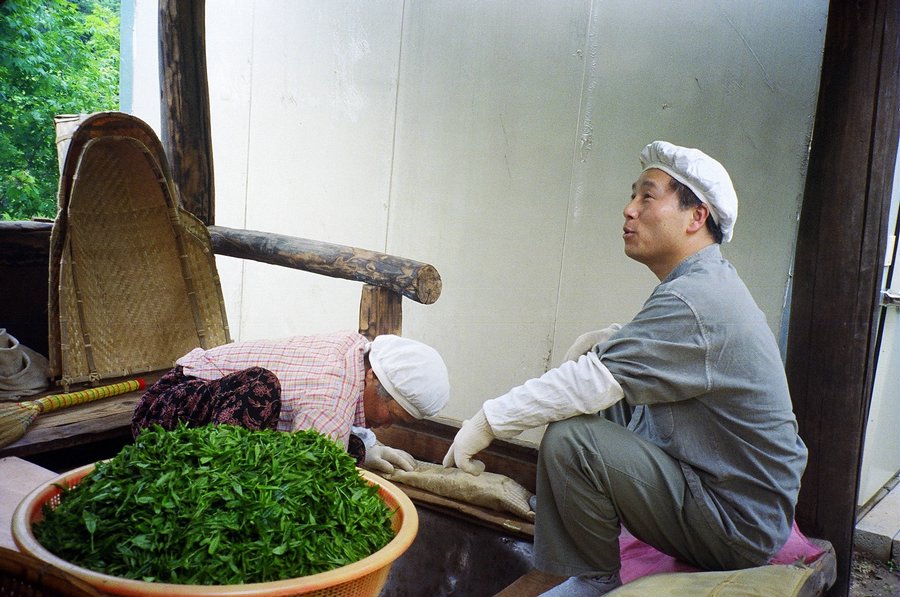
The
drying is done in a thick iron or steel cauldron, which is traditionally heated
by a wood fire although nowadays a gas ring is often used, since that allows
easier control of the temperature. The cauldron is first heated to about 350
degrees Celsius then the fresh leaves are tipped in. The leaves may emit a
hissing crackle as they touch the hot metal. They must be tossed gently and
stirred constantly to prevent any burning. This softens them; then once they
have absorbed the heat, they can be briefly compressed and rolled together to
encourage the evaporation of their moisture. Ofter two people work together to
keep the leaves turning, hunched over the hot cauldron in what is a truly
back-breaking task.

Rolling
After
an initial 10 minutes or so of initial softening and drying over the fire, the leaves
are removed from the heat and rubbed and rolled vigorously by the palms of the
hands on a firm flat surface, often a rough straw mat or basket, so that they
curl tightly on themselves. This encourages the development of an intense taste
but if too much violence is used the leaves will tear and break and the quality
of the tea will suffer. Speed and strength are both essential here.
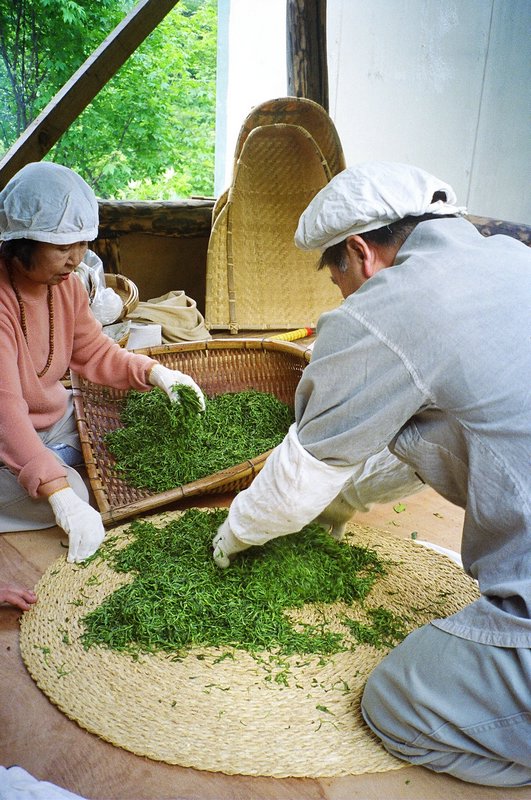
Separating
The
next step is the most delicate and time-consuming. The emerging juices make the
rolled leaves tend to stick tightly together, and they have to be shaken apart
one by one in order that their moisture can evaporate freely. Without this, the
tea cannot dry properly, but if too much force is used, the leaves will tear
and break.

Throughout the entire drying process, older leaves, twigs and harder
stalks must continue to be removed. The partially dried leaves may next be
spread thinly on paper laid on trays and left exposed to the air while other
batches of fresh leaves are dried.
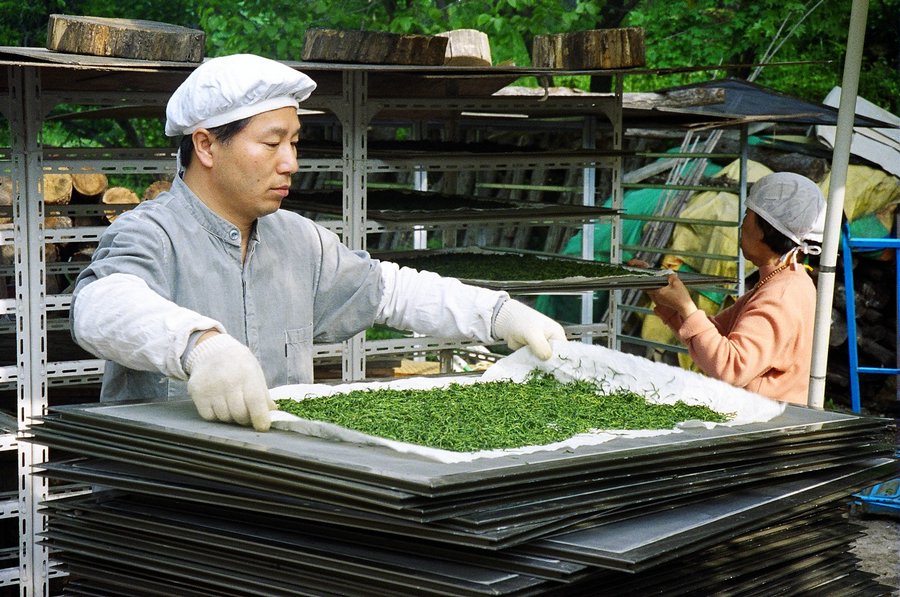
By
the end of the first cycle of drying and rolling, the leaves have already
diminished considerably in volume. They are now put back in the cauldron, which
is rather cooler than for the first drying though still quite hot. Again they
are turned, pressed, rolled gently as the drying continues. Then the hot leaves
are once again removed from the cauldron, rubbed and rolled together on a hard
surface, and shaken apart.

Once agin they are given a short time to go on
drying in the air. Then the same process is repeated, several times, until they
are virtually dry.
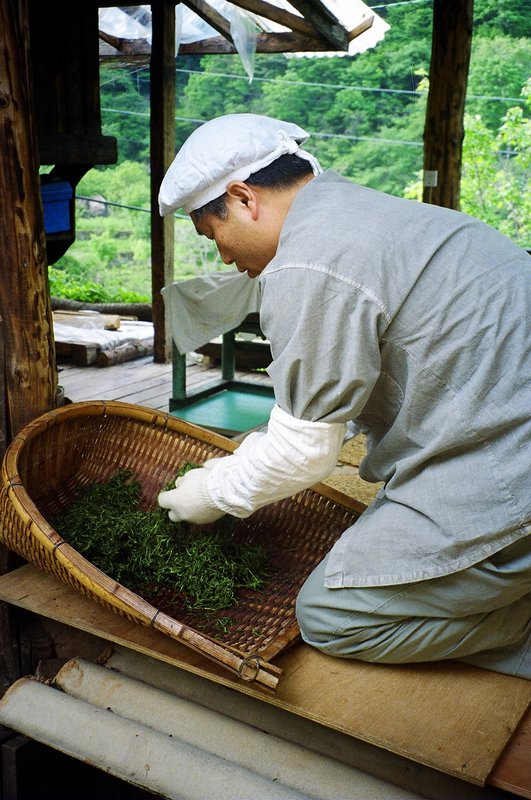

Final
Drying
The leaves are then spread out
thinly and allowed to go on drying on sheets of clean paper spread on the
heated floor of an indoors room for at least 4-5 hours, often overnight. They
are then returned to the cauldron, that is now only lightly heated, and kept
turning gently, all the time being gently stirred and pressed until the leaves
are completely dry. This is the decisive final process, known in Korean as mat-naegi or hyang-olligi (taste-giving or
fragrance-enhancing), lasting
some two hours. As the drying progresses, the leaves emit a pale cloud of
intense fragrance. By the end, their color has changed from bright green to
gray.


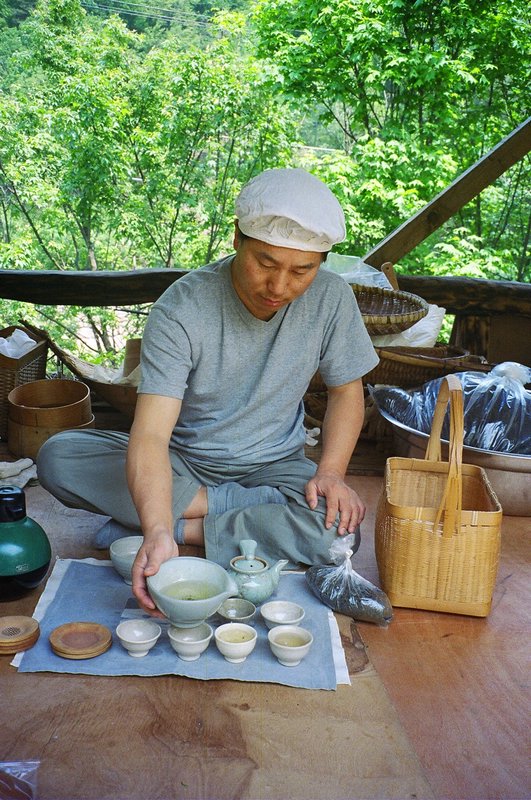
Once
the tea is completely dry, it is given time to cool before being packed. This
is important, since tea that is too quickly sealed may retain a taste of
roasting that will spoil it.
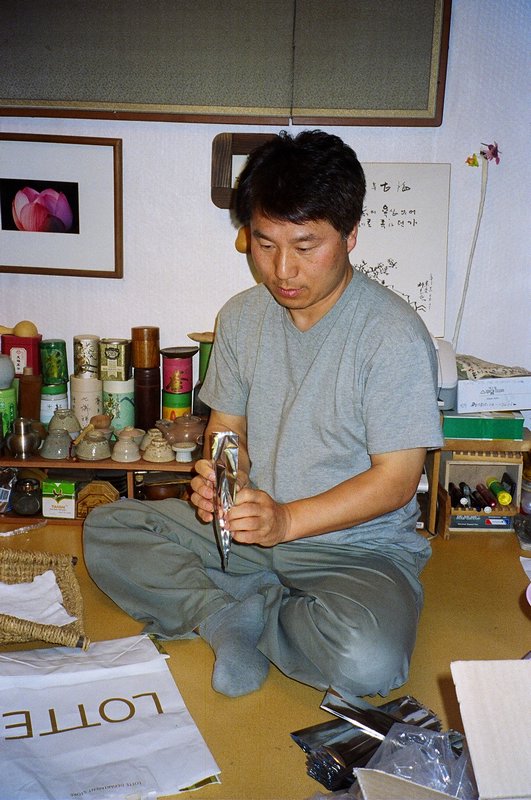
Korean tea is not usually vacuum packed, but is
sealed in foil bags containing 50 grams in the case of ujeon and 50 or
100 grams for other grades. The most important thing is to prevent any contact
with moisture. The tea should be stored in a cool place and once a pack is
opened, it should be used up fairly quickly, especially in the case of ujeon,
which can easily lose its delicate taste once exposed to the air.